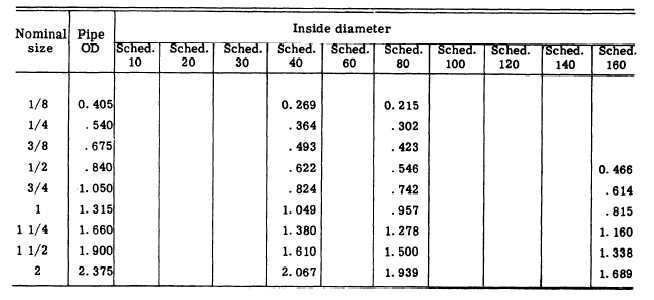Table 5-1.—Wall Thickness Schedule Designations for Pipe
160 pipe has a 0.815 ID. In each case the OD is
1.315 (table 5-1) and the wall thicknesses are
0.133
0.179
and 0.250
respectively. Note
that the difference between the OD and ID
includes two wall thicknesses and must be divided
by 2 to obtain the wall thickness.
Tubing differs from pipe in its size classi-
fication. Tubing is designated by its actual OD.
(See table 5-2.) Thus, 5/8-inch tubing has an OD
of 5/8 inch. As indicated in the table, tubing is
available in a variety of wall thicknesses. The
diameter of tubing is often measured and
indicated in 16ths. Thus, No. 6 tubing is 6/16 or
3/8 inch, No. 8 tubing is 8/16 or 1/2 inch, and
so forth.
The wall thickness, material used, and ID
determine the bursting pressure of a line or fitting.
The greater the wall thickness in relation to the
ID and the stronger the metal, the higher the
bursting pressure. However, the greater the ID for
a given wall thickness, the lower the bursting
pressure, because force is the product of area and
pressure.
Materials
The pipe and tubing used in fluid power
systems are commonly made from steel, copper,
brass, aluminum, and stainless steel. Each of these
metals has its own distinct advantages or
disadvantages in certain applications.
Steel pipe and tubing are relatively inexpensive
and are used in many hydraulic and pneumatic
systems. Steel is used because of its strength,
suitability for bending and flanging, and
adaptability to high pressures and temperatures.
Its chief disadvantage is its comparatively low
resistance to corrosion.
Copper pipe and tubing are sometimes used
for fluid power lines. Copper has high resistance
to corrosion and is easily drawn or bent. However,
it is unsatisfactory for high temperatures and has
a tendency to harden and break due to stress and
vibration.
Aluminum has many of the characteristics and
qualities required for fluid power lines. It has high
resistance to corrosion and is easily drawn or bent.
In addition, it has the outstanding characteristic
of light weight. Since weight elimination is a vital
factor in the design of aircraft, aluminum alloy
tubing is used in the majority of aircraft fluid
power systems.
Stainless-steel tubing is used in certain areas
of many aircraft fluid power systems. As a general
rule, exposed lines and lines subject to abrasion
or intense heat are made of stainless steel.
An improperly piped system can lead to
serious power loss and possible harmful fluid
5-2


